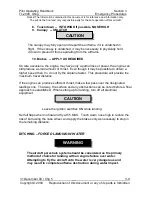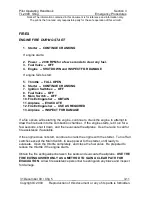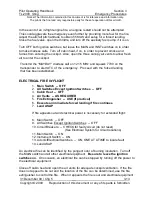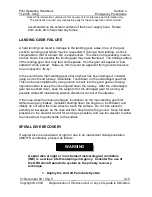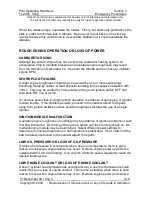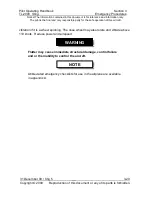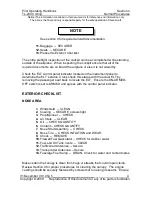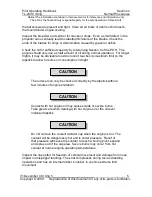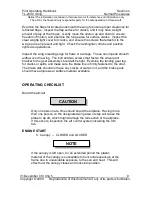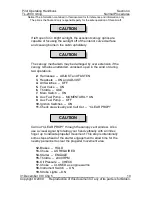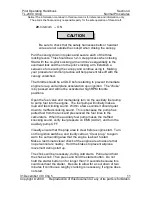
Pilot Operating Handbook
Section 3
TL-2000
Sting
Emergency Procedures
Notice! The information contained in this document is for reference and information only.
The pilot is the final and only responsible party for the safe operation of this aircraft.
31 December 09 / Chg 5
__
3-16
Copyright © 2009 Reproduction of this document or any of its parts is forbidden.
IF the aircraft parachute system is not deployed:
1.
Airspeed Check
Throttle to IDLE if the airspeed is increasing.
Throttle to FULL if the airspeed is decreasing.
2.
Level the wings using coordinated aileron and rudder until the
wings of the Attitude Indicator (or attitude reference) or turn
coordinator are level. Remember there is no pitch data
available from the turn coordinator. Adjust the throttle as needed.
3.
Apply elevator pressure steadily until 70 KIAS is established on
the airspeed indicator and the altimeter shows neither a climb nor
a descent.
When recovering from a nose-low attitude, do not over-stress the
airframe by pulling back too abruptly on the flight stick.
4.
Throttle – As Required
5.
Trim the aircraft to maintain 70 KIAS.
6.
Upon re-entering VFR/VMC conditions, resume normal
cruise operation.
Close the throttle to prevent any further increase in airspeed produced by the engine.
Because it presents less data to a confused pilot, consider the turn coordinator as the
primary reference for bank even though an attitude indicator is installed on the
airplane. Although no pitch information is displayed, the solid state gyro of the turn
coordinator is not gimbaled and should not tumble at steep aircraft pitch attitudes or
bank angles. Establish aircraft control then use the aircraft instruments as the primary
aircraft attitude reference.
Level the airplane wings using the turn coordinator and the attitude reference. Then
bring the attitude reference into your cross check as the primary instrument. If
airspeed is increasing, (diving), then steadily pull back on the stick until the airspeed
reaches 70 KIAS. Hold this airspeed until the altimeter shows neither a climb nor a
descent. Straight and level flight has now been regained. Then, lower the nose to
maintain 70 KIAS.
Continue to monitor the attitude reference, Airspeed, turn coordinator, altimeter, and
the VSI descent rate. Establish a descent at 70 KIAS until positive, visual outside
references can be maintained.
CAUTION








